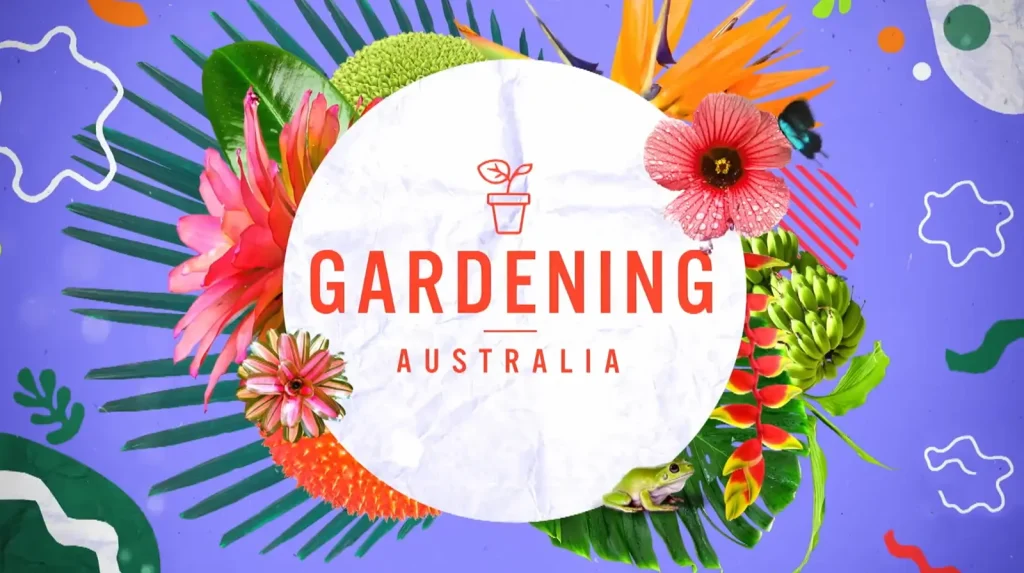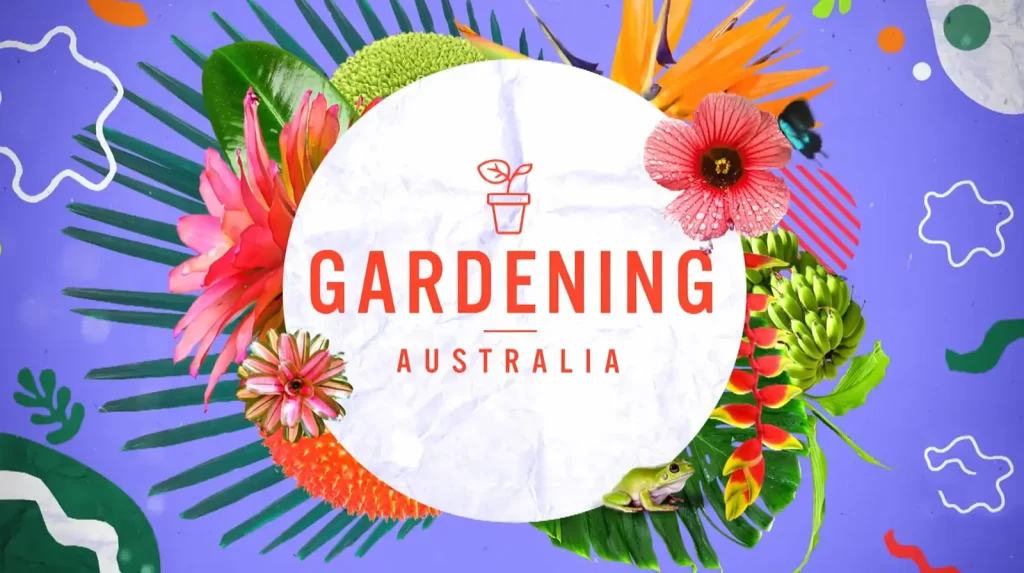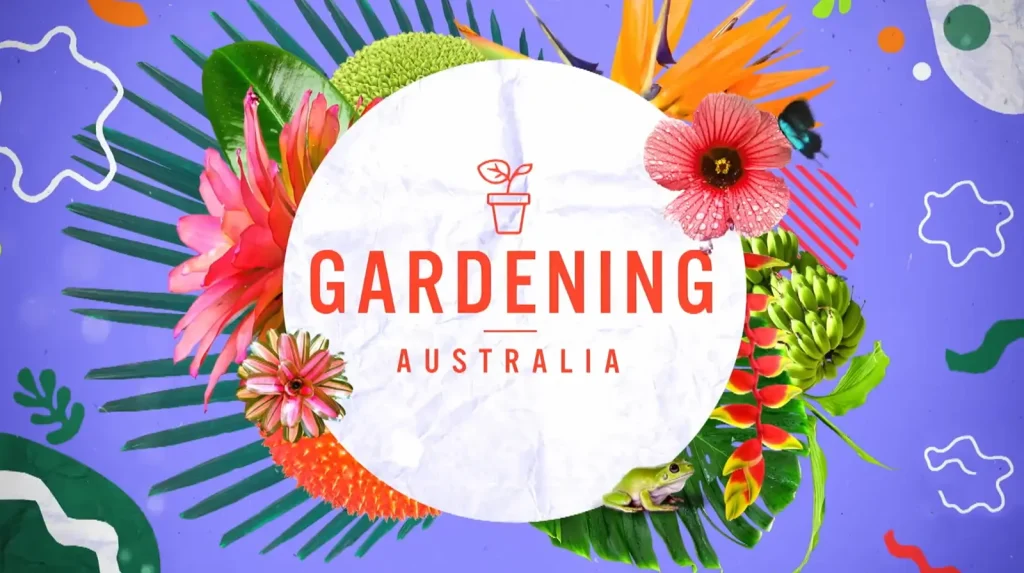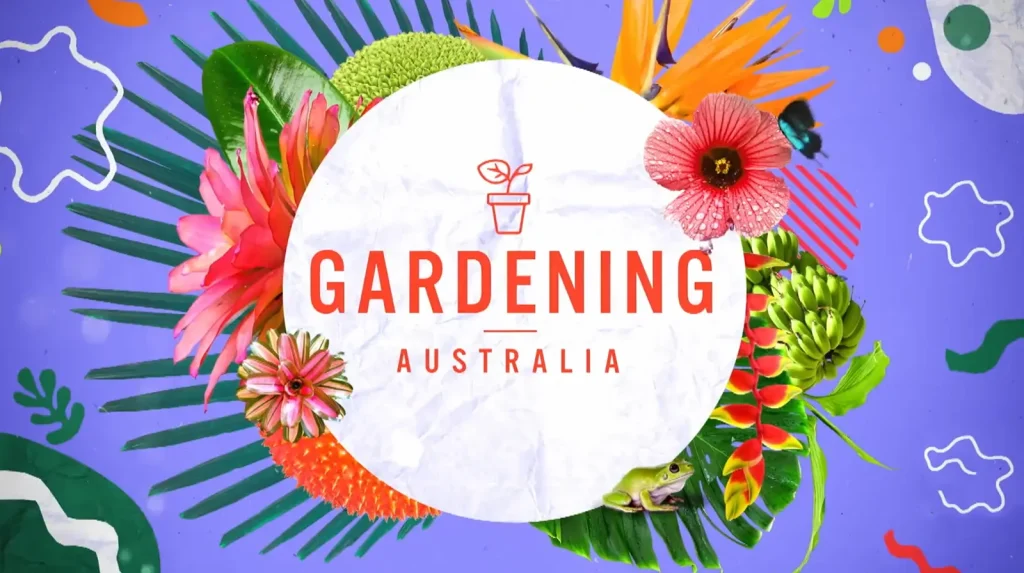Gardening Australia 2024 episode 9: our beloved hosts embark on a series of captivating adventures that blend the love for fauna, flora, and the endless creativity that gardening entails. This episode, rich in content and warmth, promises to be a treasure trove of inspiration for gardening enthusiasts and nature lovers alike.
Our journey begins with Costa, who ventures into the heart of Australia Zoo, a place where the line between humans and wildlife blurs in the most heartwarming ways. There, Costa doesn’t just make friends; he enters into a world where furry companions teach him the unspoken language of the wild. His encounters, filled with moments of wonder and affection, underscore the profound bond that exists between nature and nurturing. Through Costa’s eyes, viewers are invited to experience the joy and humility that comes from connecting with these extraordinary creatures in their natural habitat.
Next, we are taken on a tour by Jane, who masterfully showcases that size is merely a concept when it comes to gardens. She explores a tiny garden, a marvel of space utilization that bursts with life, proving that even the smallest plots can possess immense character and beauty. This garden, a microcosm of biodiversity and design ingenuity, stands as a testament to the gardener’s vision and passion. Jane’s exploration highlights the garden’s unique features and the innovative strategies employed to make every inch count, providing valuable insights and inspiration to viewers who dream of creating their own oasis, regardless of space limitations.
The episode then shifts its focus to Hannah, who takes the concept of seasonal gardening to new heights. As autumn unfurls its colors, Hannah augments her crop supply with a thoughtful selection of plants that thrive in the cooler months. Her approach, a blend of practicality and foresight, ensures a bounty of harvest even as the season changes. Hannah shares her knowledge and techniques for extending the gardening season, offering tips on crop selection, planting strategies, and care. Her segment is a masterclass in planning and adaptation, encouraging gardeners to think ahead and enjoy the fruits of their labor all year round.
Sophie, with her characteristic flair for creativity, brings art and gardening together in an enchanting project that captures the essence of spring. She takes the vibrant colors of flowers and hammers them into buntings, a process that not only showcases the beauty of nature but also preserves it in a unique way. This artistic endeavor, a fusion of horticulture and craft, results in stunning decorative pieces that celebrate the colors of the garden. Sophie’s segment is an invitation to viewers to explore their artistic side and find new ways to bring the beauty of the garden into their homes and hearts.
Gardening Australia 2024 episode 9
Finally, Clarence immerses himself in a rosy delight, exploring the world of roses in all their glory. His segment is a deep dive into the varieties, care, and cultivation of these beloved blooms, showcasing the diversity and beauty that roses bring to any garden. From classic favorites to rare and exotic specimens, Clarence’s journey through the rose garden is a celebration of color, fragrance, and form. He shares expert advice on selecting, planting, and caring for roses, making this segment a must-watch for anyone who dreams of adding these iconic flowers to their garden.
“Gardening Australia 2024” episode 9 is a beautifully crafted narrative that weaves together the threads of wildlife conservation, innovative gardening, seasonal planning, artistic expression, and the timeless allure of roses. Each story, expertly told by our passionate hosts, is a reminder of the endless possibilities that gardening offers and the deep connection between humans and the natural world. This episode is not just a showcase of gardening expertise; it’s an invitation to viewers to explore, to dream, and to find their own place in the ever-expanding tapestry of nature.
Lettuce Grow
In the brisk and refreshing climate of Hobart, meticulous planning and timing are crucial for Hannah as she embarks on the journey of planting crops. The autumn season, with its unique fusion of gentle sunlight and a mild warmth, offers an ideal setting to initiate the growth of various crops, ensuring a steady supply of nutritious food throughout the cold winter months and into the vibrant spring.
Among the vegetables in Hannah’s garden, Brassicas hold a special place. These plants are already flourishing, yet in order to maintain a continuous supply during the winter, Hannah strategically plants a succession of seedlings from the mid-summer warmth into the cooler days of autumn. Brassicas are known for their voracious appetite for nutrients, prompting Hannah to enrich the soil generously with a mix of manure and compost. Additionally, she commits to a routine of providing liquid feeds bi-weekly until the chill of winter signals a slowdown in plant metabolism. This temporary halt in growth does not spell the end; with the arrival of spring, the feeding regimen can be revived to kickstart growth once more.
A key insight Hannah has gained through experience is the importance of crop rotation, especially with Brassicas. To prevent the accumulation of pests and diseases that favor Brassicas, she avoids planting them in the same location year after year. For optimal growth and health of Chinese cabbage, she plants seedlings approximately 30-50cm apart. This spacing strategy not only allows the plants ample room to flourish but also promotes good airflow, which is crucial in minimizing disease risk. Between these, she cleverly plants pak choy, a quick-growing crop that will be harvested before the cabbages require the space, thereby making efficient use of the garden area. Hannah knows the importance of watering the seedlings right after planting to ensure their best start.
Mulching
In Hobart’s cool climate, Hannah takes a unique approach during winter by not mulching the soil. Leaving the soil uncovered maximizes exposure to the limited winter sun, allowing for the absorption of warmth, which is beneficial for plant growth.
Peas
Peas are another crop that Hannah plants during this time. They, too, require soil enriched with compost and manure. However, peas also need structural support as they grow. Hannah has ingeniously repurposed trellis found at a local tip shop for this very purpose. By planting peas densely, she plans to thin out the seedlings later, ensuring they are spaced about 15cm apart to facilitate good airflow, which is crucial in preventing rust and other fungal diseases. As spring approaches, these plants are primed to bloom and be pollinated. For areas prone to heavy frosts, Hannah suggests delaying planting to early spring or starting the seeds in a cold frame or greenhouse.
Potatoes
Potatoes are typically planted in spring throughout Tasmania, but thanks to her garden’s favorable conditions, which include ample sunshine and only light frosts, Hannah is planting potatoes now. She explains that potatoes can be either determinate or indeterminate, similar to tomatoes. Indeterminate varieties, which grow along a vine, benefit from having soil mounded around them as they grow, encouraging the development of potatoes along the stem. On the other hand, determinate varieties, like the Kennebec potatoes she’s planting, grow in a single layer and do not require mounding. To accelerate growth, Hannah practices chitting—pre-sprouting seed potatoes before planting. This gives them a significant head start once they’re in the ground. She also emphasizes the importance of using verified seed potatoes to ensure they are disease-free.
Hannah advocates for the use of green manure in beds that have been depleted by previous crops. She sows a mix of oat and rye grass, mustard, and pea seeds, which serves multiple purposes: deterring weeds, improving soil quality, providing a habitat for beneficial microbes, preventing soil compaction, and enriching the soil with nitrogen. After 4-6 weeks, the green manure crop is cut down and incorporated back into the soil, replenishing it with vital nutrients and energy before the next vegetable crop is planted.
Lastly, autumn is the perfect time for planting garlic in cooler climates like Hobart’s, just before the soil starts to cool down. Hannah plants three rows of ‘Tassie Purple’, a variety that thrives in cool conditions, spacing the cloves about a fist’s width apart in well-drained soil. She carefully positions each clove with the flat side down and the pointy end up, ensuring they are watered well to establish strong roots.
Through thoughtful planning, innovative techniques, and a deep understanding of her garden’s unique climate, Hannah skillfully navigates the challenges and rewards of gardening in Hobart, ensuring a bountiful and diverse harvest throughout the year.
Tomato Update
In recent years, Millie has been grappling with a persistent problem affecting her beloved tomato plants. Despite her best efforts, her tomatoes have continued to face significant health issues due to a disease that she has struggled to eradicate. The symptoms of this troubling condition include the appearance of small lesions on the stems, coupled with dark spots and unsightly markings on some of the fruit and leaves. Based on these signs, Millie suspects that the culprit behind her plants’ ailment is early tomato blight.
The Australian Society of Horticultural Science offers a definition of blight that underscores its severity: “A botanical disease caused by various pathogens, often spread through wind, watering, and touch. If not treated, it can be deadly for tomato plants, ruining an entire crop.” This stark warning highlights the critical nature of addressing the problem promptly and effectively.
In her quest to combat this disease, Millie has adopted several recommended practices aimed at improving the health and resilience of her tomato plants. These measures include the proper pruning and support of the plants to enhance air circulation, as well as a shift to watering the plants at their base rather than from overhead, to minimize the risk of spreading pathogens.
Furthermore, Millie has implemented a strategy of rotating her crops and switching to metal stakes, which allows for easier disinfection, in an effort to break the cycle of infection. She has also dedicated herself to maintaining the overall happiness and health of her plants. Despite these efforts, her favorite variety of tomato has suffered so severely that she was forced to remove the entire crop this year.
While the overall state of her crop remains satisfactory, the continuous battle with this disease has led Millie to make a difficult decision. In a bid to put an end to the cycle of infection once and for all, she plans to abandon the seeds she has meticulously collected over more than a decade and start anew with fresh seeds next year. She harbors hope that this drastic measure will finally halt the disease’s progression.
However, there remains a particular variety of tomato that holds special significance for Millie, one that she fears she may not be able to replace. Consequently, she is actively seeking out specific treatment options for this individual seed, determined to preserve its lineage despite the challenges posed by the disease.
F.A.Q. about Gardening Australia 2024 Episode 9
A.: In this episode, Costa visits Australia Zoo, where he experiences the deep and profound connection between humans and wildlife. His adventures at the zoo highlight the importance of nurturing and conserving nature, showcasing heartwarming interactions with various animals. Through Costa’s journey, viewers are invited to explore the unspoken language of the wild, emphasizing the joy and humility found in connecting with wildlife in their natural habitat.
Q2: How does Jane address the challenges and opportunities of small space gardening?
A.: Jane takes viewers on a tour of a tiny garden that defies the constraints of limited space through innovative design and space utilization. This segment reveals how even the smallest gardens can burst with life and beauty, serving as a powerful testament to the gardener’s creativity and passion. Jane’s exploration offers valuable insights and inspiration for viewers interested in creating their own vibrant oasis, regardless of space limitations.
Q3: What seasonal gardening tips does Hannah offer in this episode?
A.: Hannah focuses on the concept of seasonal gardening, sharing her strategy for planting a selection of crops that thrive in cooler months. Her approach combines practicality and foresight, ensuring a continuous bounty through the changing seasons. She offers viewers tips on crop selection, planting strategies, and maintenance, teaching how to extend the gardening season and enjoy a year-round harvest.
Q4: How does Sophie blend art and gardening in this episode?
A.: Sophie introduces an enchanting project where art meets gardening. She demonstrates how to create decorative buntings by transferring the vibrant colors of flowers onto fabric, a process that not only captures the beauty of nature but also preserves it in a unique form. This artistic endeavor invites viewers to explore their creativity and find new ways to incorporate the beauty of their gardens into home decor, celebrating the splendor of nature in an innovative way.
Q5: What expertise does Clarence bring to the episode regarding rose cultivation?
A.: Clarence delves into the world of roses, offering a comprehensive guide on the varieties, care, and cultivation of these iconic blooms. His segment is a deep dive into the diversity and beauty of roses, from classic favorites to exotic specimens. Clarence shares expert advice on selecting, planting, and caring for roses, making this a crucial watch for anyone interested in adding these beloved flowers to their garden, showcasing a celebration of color, fragrance, and form.
Q6: What overarching themes are presented in Gardening Australia 2024 episode 9?
A.: This episode weaves together themes of wildlife conservation, innovative gardening techniques, seasonal planning, artistic expression, and the timeless allure of roses. Each story, narrated by passionate hosts, highlights the endless possibilities of gardening and the intrinsic connection between humans and the natural world. It serves as an invitation for viewers to explore, dream, and find their unique place within the tapestry of nature, underlining the episode’s role as more than just a showcase of gardening expertise but as a source of inspiration and connection.




